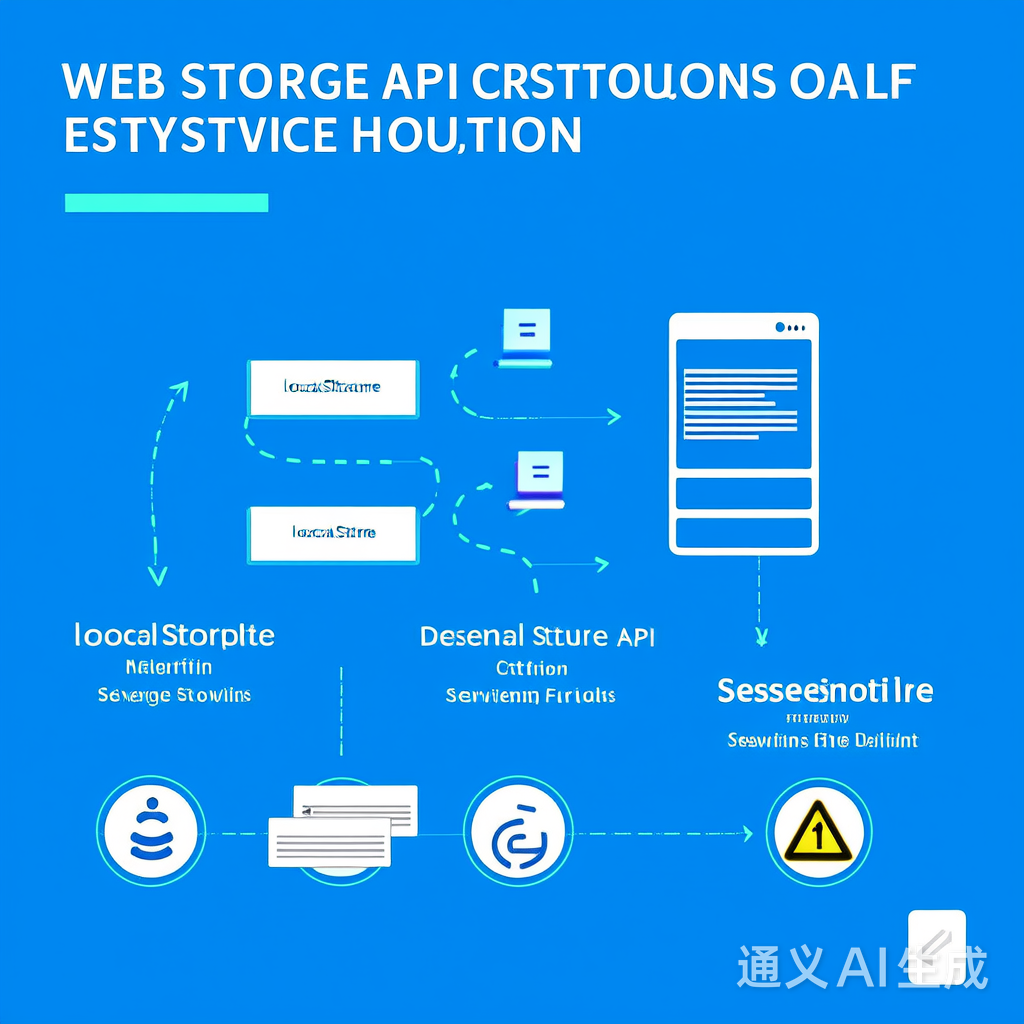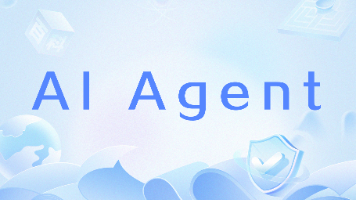前端开发中基于Web Storage API的离线数据同步与冲突解决策略
永久存储,除非用户手动清除,否则数据会一直保留:会话级存储,当浏览器标签页关闭时数据自动清除这两种存储方式都提供了简单的Key-Value存储机制,容量通常为5MB左右(各浏览器可能略有差异)。// 使用localStorage存储数据// 读取数据// 删除数据。
💓 博客主页:瑕疵的CSDN主页
📝 Gitee主页:瑕疵的gitee主页
⏩ 文章专栏:《热点资讯》
目录
在现代Web应用开发中,离线功能已成为提升用户体验的关键要素。随着移动设备的普及和网络环境的复杂性,前端应用需要在没有稳定网络连接的情况下也能正常工作。Web Storage API(包括localStorage和sessionStorage)为前端应用提供了在客户端存储数据的能力,是实现离线数据同步的基础。本文将深入探讨如何利用Web Storage API实现离线数据同步,并重点讨论冲突解决策略,帮助开发者构建更加健壮的离线应用。
Web Storage API是HTML5引入的客户端存储解决方案,提供了两种主要的存储方式:
- localStorage:永久存储,除非用户手动清除,否则数据会一直保留
- sessionStorage:会话级存储,当浏览器标签页关闭时数据自动清除
这两种存储方式都提供了简单的Key-Value存储机制,容量通常为5MB左右(各浏览器可能略有差异)。
// 使用localStorage存储数据
localStorage.setItem('username', 'JohnDoe');
localStorage.setItem('preferences', JSON.stringify({theme: 'dark', language: 'en'}));
// 读取数据
const username = localStorage.getItem('username');
const preferences = JSON.parse(localStorage.getItem('preferences'));
// 删除数据
localStorage.removeItem('username');

离线数据同步的核心在于将本地存储的数据与远程服务器的数据进行同步。这个过程通常包括以下几个步骤:
- 本地数据修改:用户在离线状态下对数据进行操作
- 数据缓存:将修改后的数据存储在Web Storage中
- 网络恢复:当设备重新连接网络时
- 数据同步:将本地缓存的数据上传到服务器
- 冲突处理:解决可能存在的数据冲突
在离线数据同步过程中,冲突是不可避免的。当同一数据项在不同设备上被修改时,就会产生冲突。以下是几种常见的冲突解决策略:
当发生冲突时,服务器上的数据优先于本地数据。这种策略适用于服务器作为权威数据源的场景。
function syncWithServer(data) {
// 检查服务器上是否存在相同ID的数据
fetch(`/api/data/${data.id}`)
.then(response => response.json())
.then(serverData => {
// 如果服务器数据存在且更新时间更晚,则覆盖本地数据
if (serverData && serverData.updatedAt > data.updatedAt) {
// 服务器数据优先
return updateLocalData(serverData);
} else {
// 本地数据优先
return saveToLocal(data);
}
})
.catch(() => {
// 服务器无响应,使用本地数据
return saveToLocal(data);
});
}
当发生冲突时,本地数据优先于服务器数据。这种策略适用于用户在离线状态下进行了重要修改的场景。
function syncWithServer(data) {
// 上传本地数据到服务器
fetch('/api/data', {
method: 'POST',
body: JSON.stringify(data)
})
.then(response => {
if (!response.ok) {
// 如果服务器返回错误,保留本地数据
return data;
}
return response.json();
})
.then(serverData => {
// 本地数据优先,无需处理
return data;
});
}
对于多用户协作的场景,系统尝试自动合并客户端和服务器的数据。
function mergeData(localData, serverData) {
// 检查哪些字段有冲突
const conflictFields = Object.keys(localData).filter(
key => localData[key] !== serverData[key]
);
// 如果没有冲突,直接返回服务器数据
if (conflictFields.length === 0) {
return serverData;
}
// 有冲突,尝试合并
const mergedData = { ...serverData };
conflictFields.forEach(key => {
// 采用特定规则合并,例如:使用最新的数据
if (localData.updatedAt > serverData.updatedAt) {
mergedData[key] = localData[key];
}
});
return mergedData;
}

下面是一个简单的离线数据同步库实现,包含冲突检测和解决功能:
class OfflineSync {
constructor(storeKey = 'offlineData') {
this.storeKey = storeKey;
this.syncQueue = [];
this.isSyncing = false;
}
// 添加数据到本地存储
addItem(item) {
const data = this.getStoredData();
data.push({ ...item, timestamp: Date.now() });
this.saveToStorage(data);
return item;
}
// 从本地存储获取数据
getStoredData() {
const stored = localStorage.getItem(this.storeKey);
return stored ? JSON.parse(stored) : [];
}
// 保存数据到本地存储
saveToStorage(data) {
localStorage.setItem(this.storeKey, JSON.stringify(data));
}
// 同步到服务器
async sync() {
if (this.isSyncing) return;
this.isSyncing = true;
const data = this.getStoredData();
// 检查是否有待同步的数据
if (data.length === 0) {
this.isSyncing = false;
return;
}
try {
// 模拟网络请求
const response = await fetch('/api/sync', {
method: 'POST',
headers: { 'Content-Type': 'application/json' },
body: JSON.stringify(data)
});
if (response.ok) {
// 同步成功,清除本地待同步数据
this.saveToStorage([]);
console.log('Data synced successfully');
} else {
console.error('Sync failed:', response.statusText);
}
} catch (error) {
console.error('Sync error:', error);
} finally {
this.isSyncing = false;
}
}
// 检测并解决冲突
resolveConflicts(localData, serverData) {
if (!serverData) return localData;
// 检查是否有冲突
const conflict = localData.some(item =>
serverData.some(serverItem =>
serverItem.id === item.id && serverItem.timestamp > item.timestamp
)
);
if (conflict) {
// 服务器数据优先
return serverData;
}
return localData;
}
}
// 使用示例
const syncManager = new OfflineSync('userProfile');
syncManager.addItem({ id: 1, name: 'John', email: 'john@example.com' });
// 当网络恢复时调用
window.addEventListener('online', () => {
syncManager.sync();
});
- 数据版本控制:为每个数据项添加版本号或时间戳,便于冲突检测
// 为数据添加版本信息
function addVersion(data) {
return {
...data,
version: Date.now(),
lastModified: Date.now()
};
}
-
增量同步:只同步修改过的数据,减少网络流量
-
批量处理:将多个操作合并为一个同步请求,减少网络请求次数
-
数据压缩:对存储的数据进行压缩,节省存储空间
-
存储空间监控:使用Storage API监控存储空间使用情况
async function checkStorageSpace() {
const estimate = await navigator.storage.estimate();
const usedPercent = (estimate.usage / estimate.quota) * 100;
if (usedPercent > 80) {
// 提示用户清理存储
alert('存储空间已超过80%,建议清理一些数据');
}
}
Web Storage API为前端应用提供了强大的离线数据存储能力,是实现离线数据同步的基础。通过合理的冲突解决策略,我们可以确保在各种网络环境下数据的一致性。在实际应用中,需要根据具体业务场景选择合适的冲突解决策略,并结合数据版本控制、增量同步等技术优化同步过程。
随着Web技术的不断发展,Web Storage API将继续演进,为前端开发者提供更强大的离线数据处理能力。在构建现代Web应用时,离线数据同步和冲突解决策略将成为不可忽视的关键环节,直接影响用户体验和应用的可靠性。
通过本文的介绍和示例,希望开发者能够更好地理解和应用Web Storage API,构建更加健壮、可靠的离线Web应用。

为武汉地区的开发者提供学习、交流和合作的平台。社区聚集了众多技术爱好者和专业人士,涵盖了多个领域,包括人工智能、大数据、云计算、区块链等。社区定期举办技术分享、培训和活动,为开发者提供更多的学习和交流机会。
更多推荐
 已为社区贡献2条内容
已为社区贡献2条内容






所有评论(0)